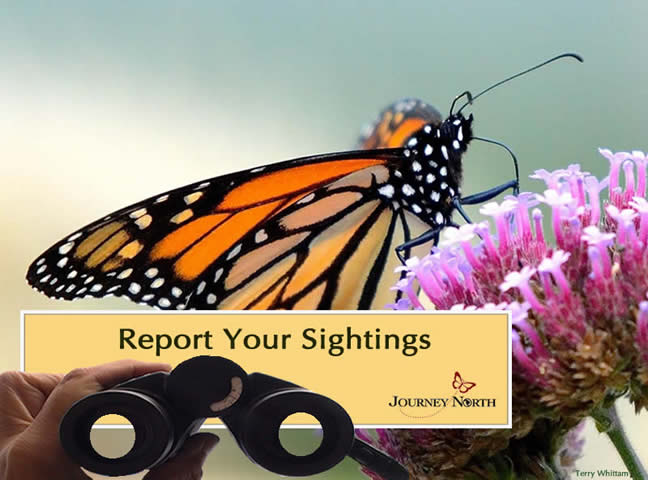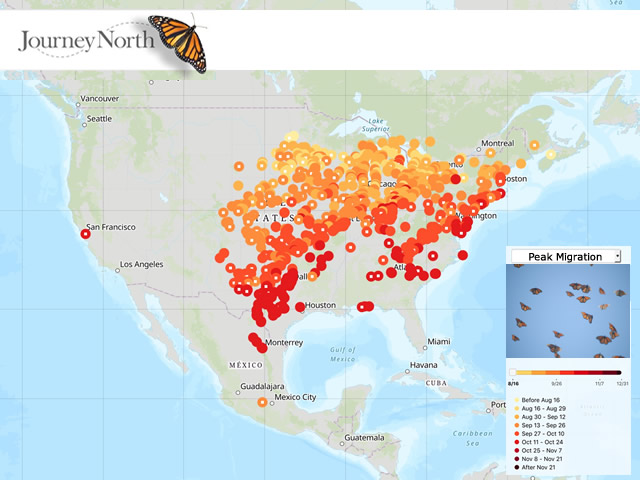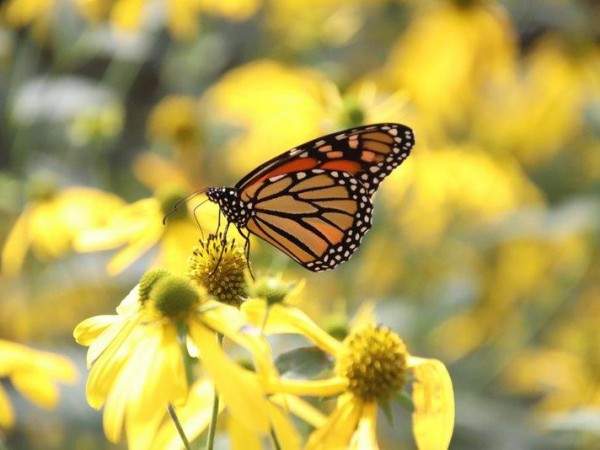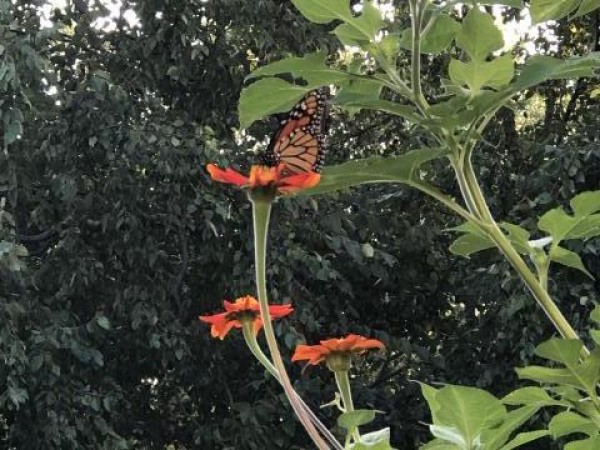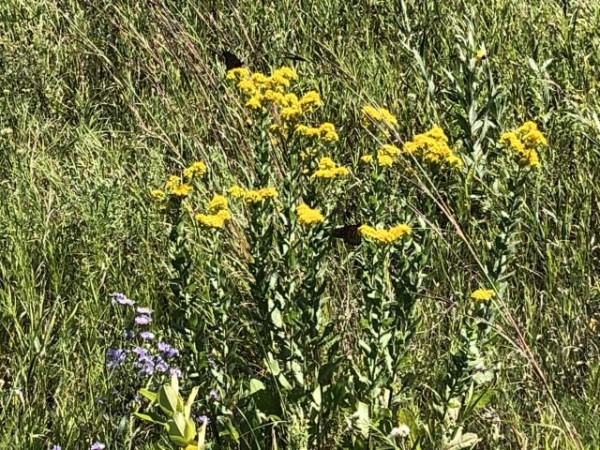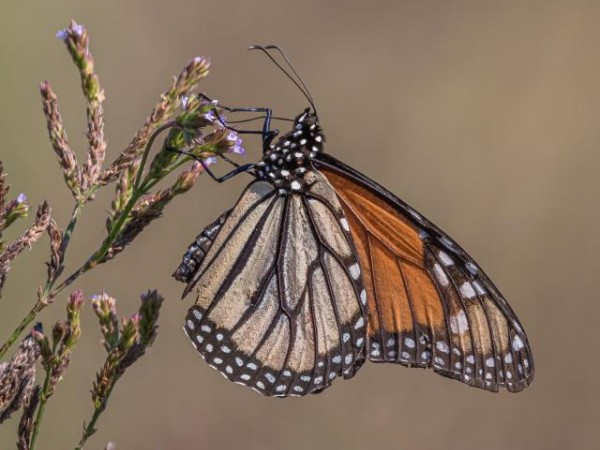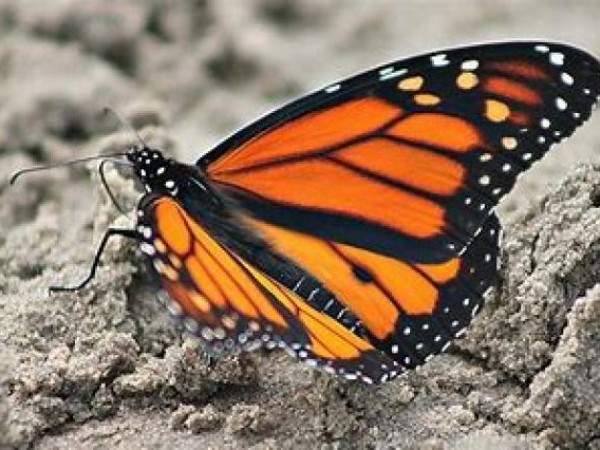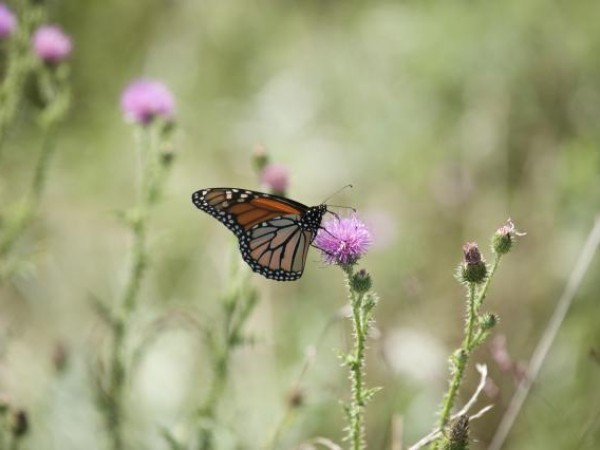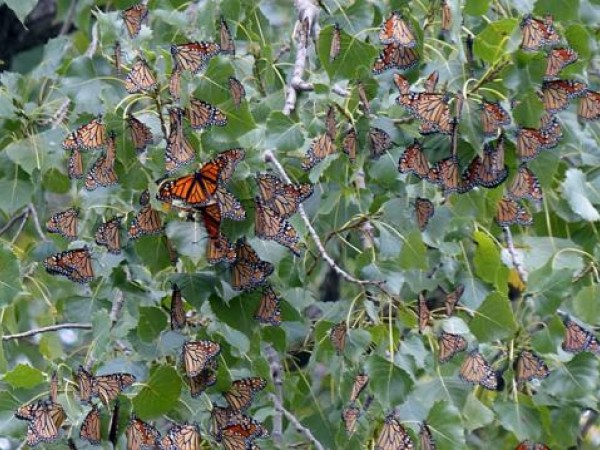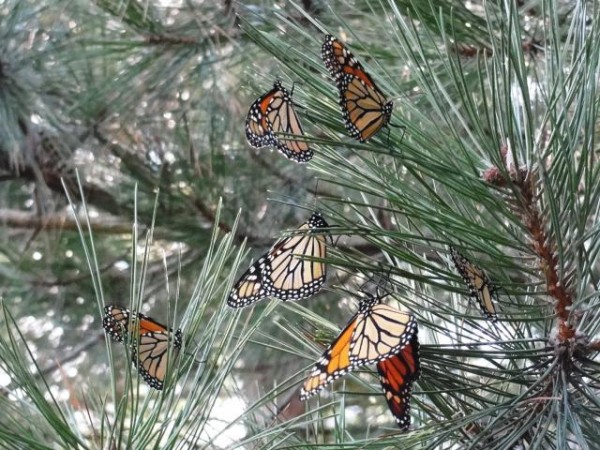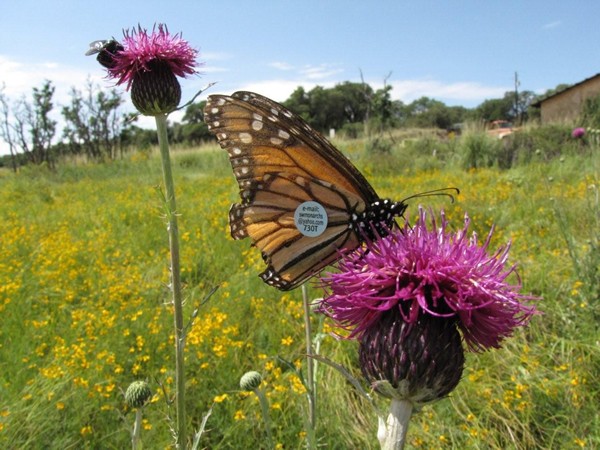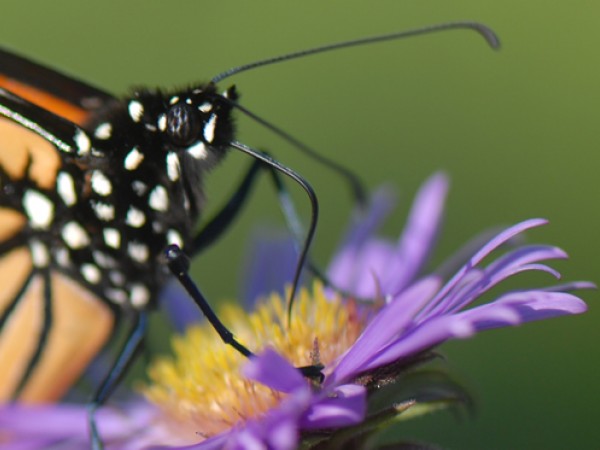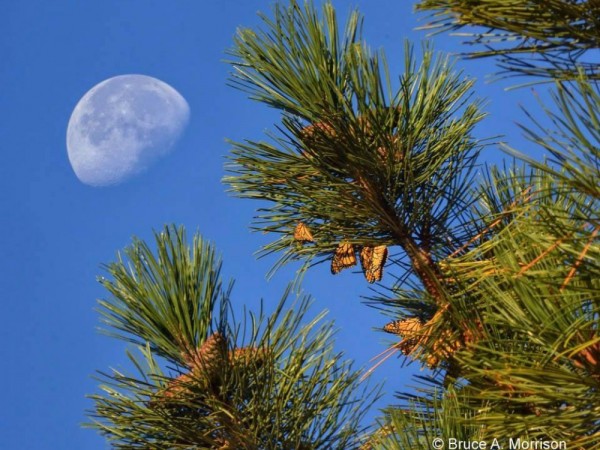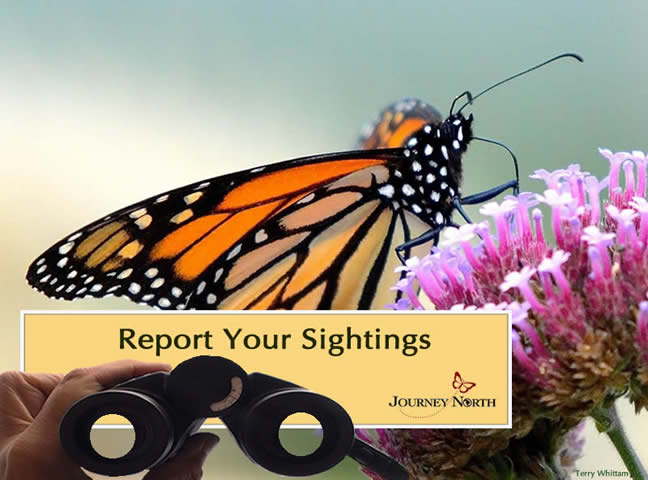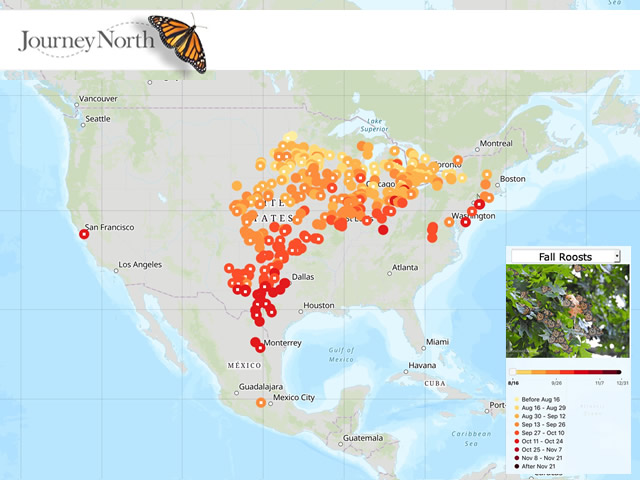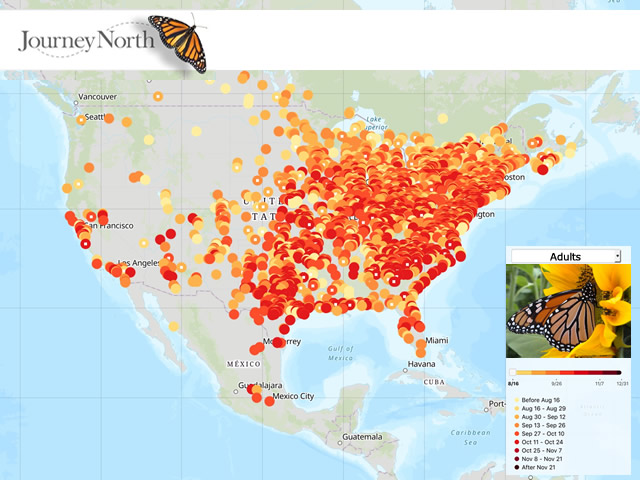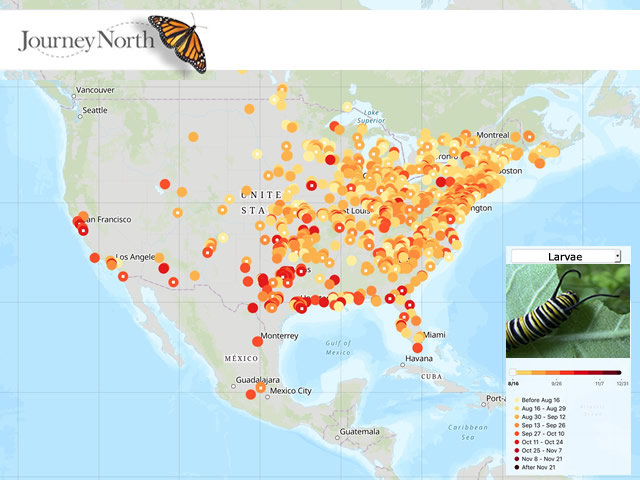On the Nectar Trail
Monarchs are on the move — flying, nectaring, and roosting.
Fueling Up, Heading South
Monarchs are on the move — flying, nectaring, and roosting. This year's large numbers are a hopeful sign, and the migration is continuing to pick up steam.
Monarchs are busy building their fat reserves by drinking nectar along their migration pathways. These migration pathways occur in large urban centers such Toronto, Detroit, Chicago, Kansas City and Atlanta as well as the mountains of Maryland, Virginia and West Virginia, the fields and prairies of southern Minnesota, Iowa, Kansas and Nebraska, and along the coastlines of the Great Lakes, the Atlantic and Gulf of Mexico.
From Toronto, ON: Tony observed monarchs throughout the day and on the move southward. (09/03/2019)
From Lenexa, KS: Mike reported, "Had several in and out of our yard today...the main choice for dinner was the popular Mexican Sunflower." (09/01/2019)
From Ruthven, IO: "Monarchs have been feeding like crazy lately. See 10 within a short distance feeding on flowers on our grassy hill at times...We have a ton of milkweed scattered about...Go Monarchs!", exclaimed Mike. (09/03/2019)
From Spirit Lake, IA: John recorded 6 monarchs "Nectaring on zinnias and marigolds .... lot's of competitive "Jockeying" for position on zinnia's. (09/01/2019)
From New Castle, VA: Jeff counted "over 175" monarchs in one day moving south. (09/04/2019)
During fall migration, monarchs must find the food they need to fuel their flight - and also to build the lipid reserves they'll need for overwintering. The butterflies eat little to nothing during their 5-month stay in Mexico. A scientific paper by Dr. Lincoln Brower shows how lipid reserves increase as the monarchs move southward.
Peak Migration
Many Journey North citizen scientists have reported monarchs traveling in a southerly direction. This is called directional flying. Others are actively measuring peaks in migrating monarchs.
From Harrisville State Park, MI: Frank noted, "The wind was northwest today, so I did a stationary count of monarchs at Harrisville State Park and counted 541 in 8 hours." (09/04/2019)
Many Roosts Observed
The monarch roosts observed by Journey North citizen scientists has increased. This week there are 146 roosts located on our fall monarch roost map. All of roosts submitted appears in a band above longitude -94. The cover image for this week's new's update depicts the largest of these reported roosts. Take a look at Darlene's reporting from the tip Point Pelee National Park in Ontario. Darlene has also provided video footage of this amazing roost in Ontario.
As covered in last week's update, roosts show us where large concentrations of migrating monarchs are found. Week by week, the map will reveal the main migration pathways to Mexico and the pace of the migration. Roosts are difficult to study. They don’t last long and they can’t be found dependably in the same places every year.
From Town of Farmington, WI: Pat observed, "larger clusters for roosting...main roost probably numbered 200, but very hard to count...wind was light out of the southeast and every roost i saw was on the northwest side of the tree...probably saw 4 distinct roosts...and lots of areas i did not monitor so untold additional monarchs there." (08/31/2019)
From Mount Cory, OH: Emily "counted 25 monarchs" roosting nearby. (09/02/2019)
From Elkton, SD: Margaret counted about 35 to 40 monarchs in 4 roosts. (08/30/2019)
What You Can Do
Plant late booming flowers. The places monarchs feed and rest during migration are called stopover sites. Help monarchs by planting flowers that bloom late into the fall such as the Mexican Sunflower, Tithonia rotundifolia.
Keep reporting to Journey North.Roosts, Adults, Eggs, and Larvae!
When submitting Roost observations to Journey North, please include the following information if possible:
-
Time of day you first saw the roost
-
Date the roost first formed
-
Nectar sources nearby like clover, alfalfa fields or wildflowers
-
Overnight temperatures
-
Wind direction. Were the monarchs shielded from the wind in this location?
-
Photos
- How you counted or estimated the number of adults roosting
Thank you for your contribution to our collective understanding of monarch migration.
Fall Monarch Migration 2019
Please report all monarchs you see: Adults, Eggs & Larvae, Overnight Roosts, Peak Migration Events


